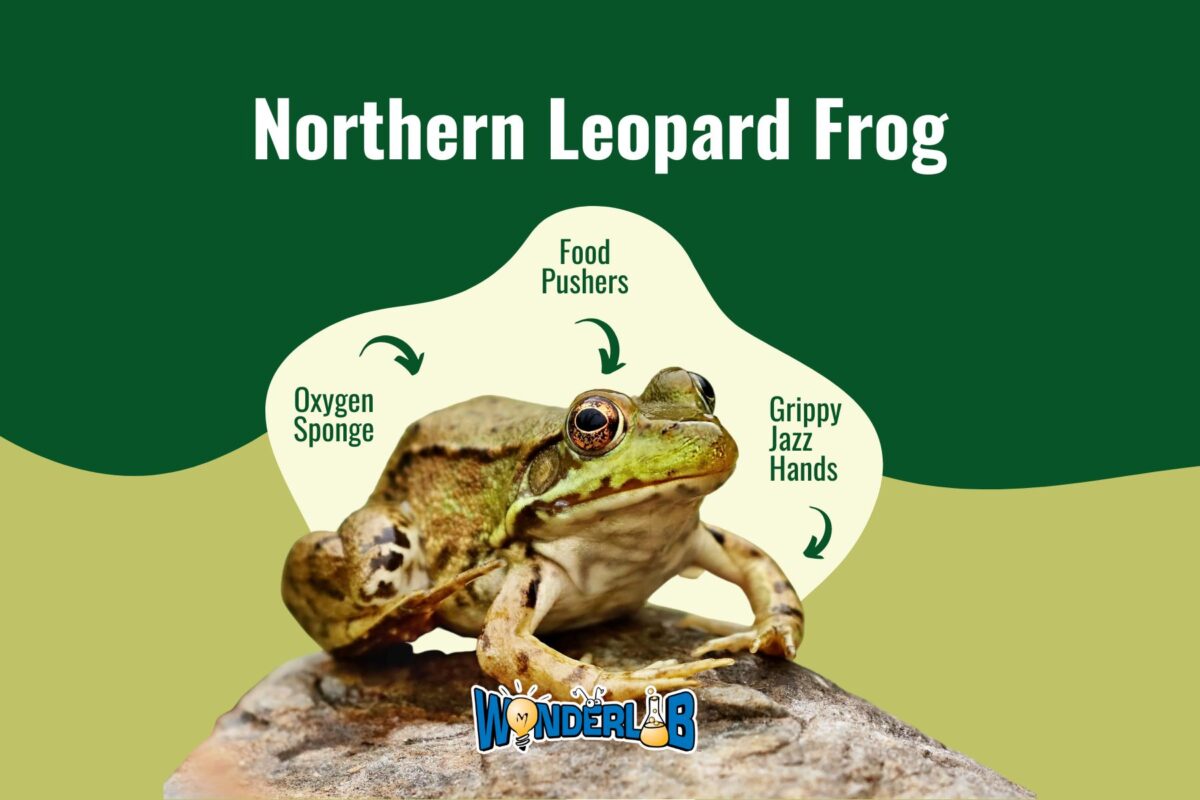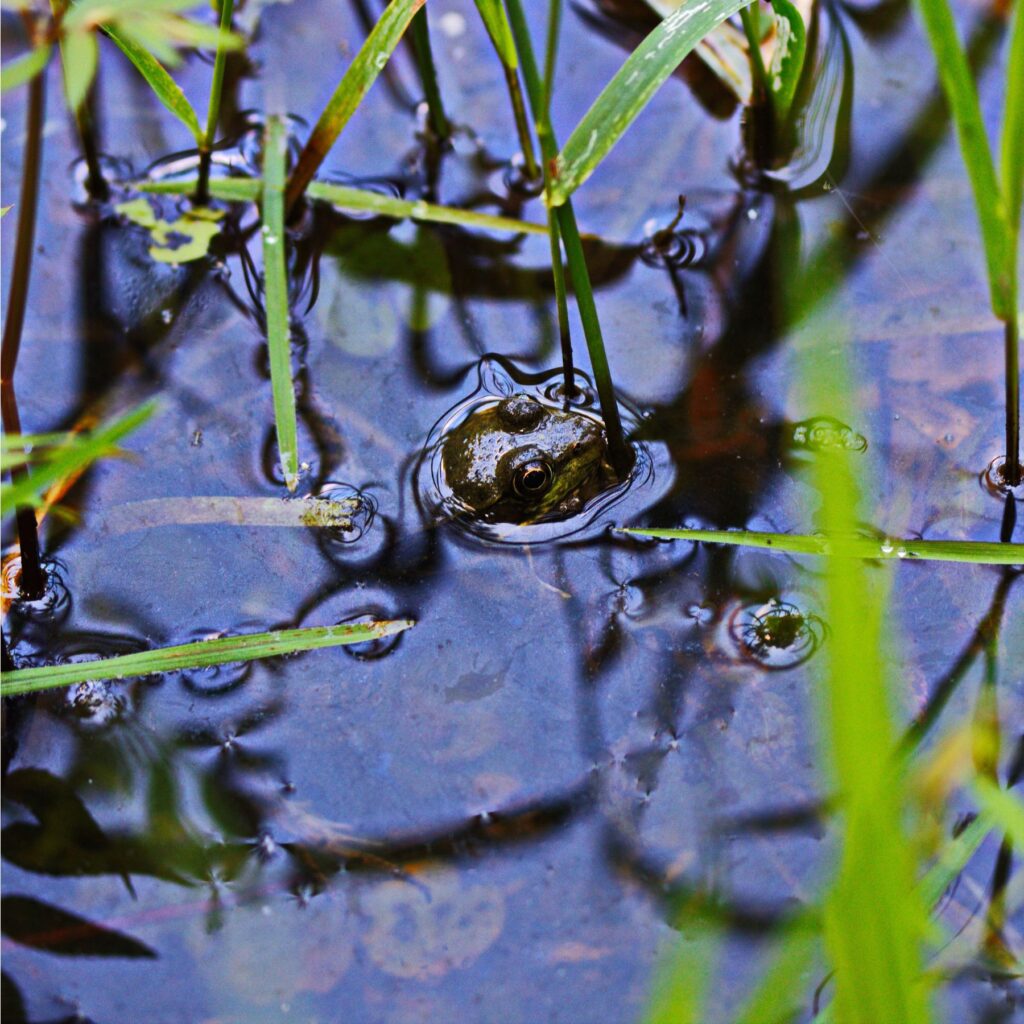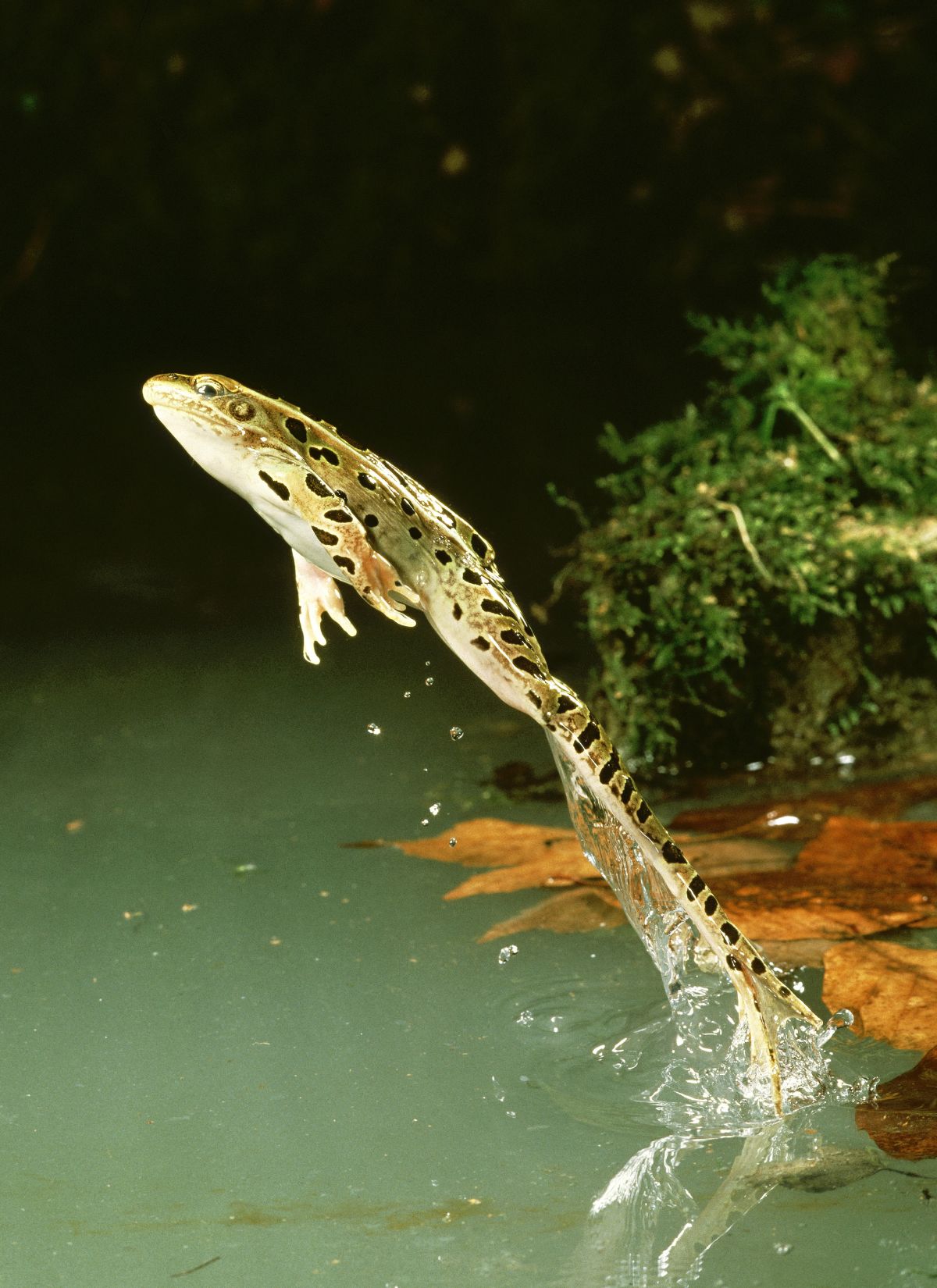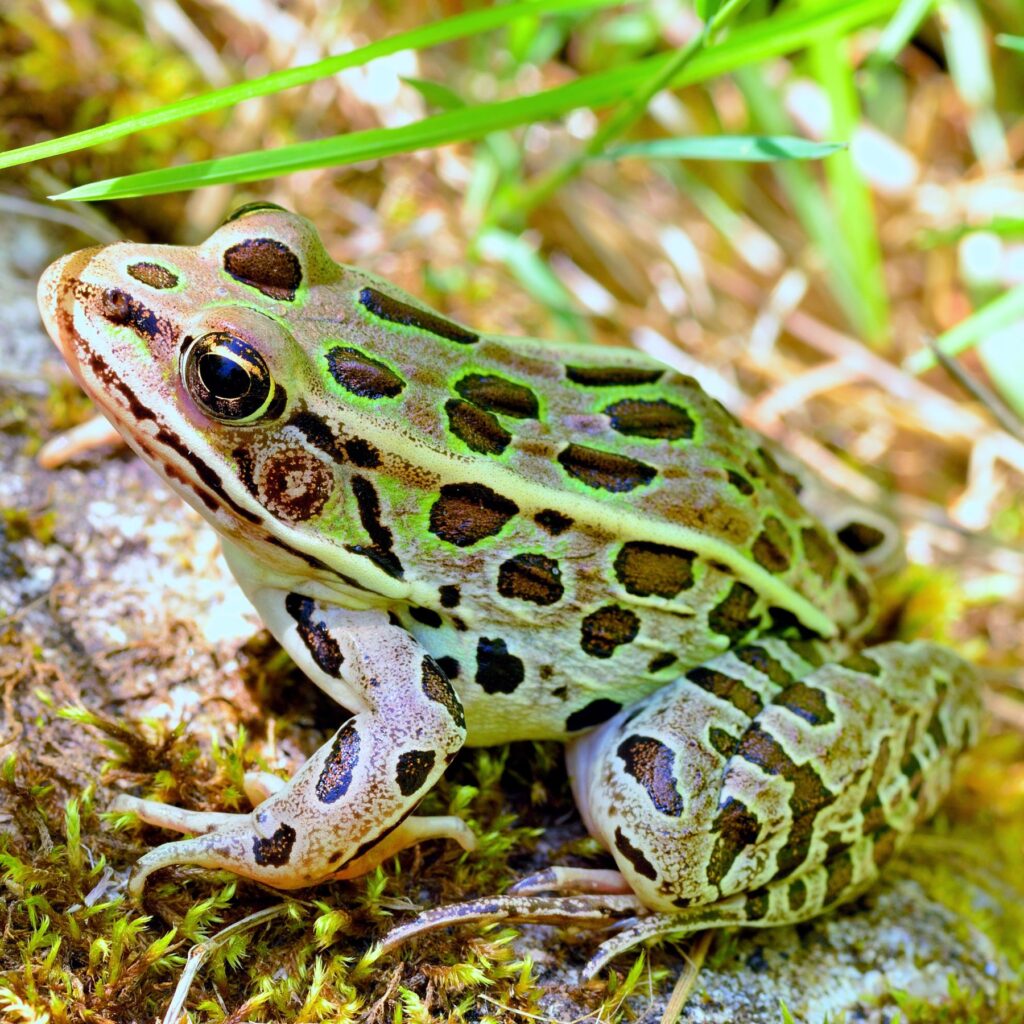
What’s slimy, brown, and spotted all over? A northern leopard frog (Rana pipiens or Lithobates pipiens)! These frogs are native to most of Canada and the northern United States, including Indiana. You may see these small, teacup sized frogs near ponds, lakes, and streams. While they are not poisonous, you probably should not touch them or pick them up. They have a tendency to scream when threatened!
Food Pushers
A northern leopard frog has large, round eyes that sit on top of its head. The location of the frog’s eyes helps it stay safe from predators, such as birds, snakes, and small mammals. Because the eyes are on top of its head the frog has excellent peripheral vision. Each individual frog eye moves 180 degrees, allowing the frog to see almost 360 degrees around it simultaneously. In comparison, humans can only see about 180 degrees of their surroundings at one time. This extra scope of awareness gives them an even bigger advantage in spotting predators. By keeping its eyes just above the water to hunt for food, the frog protects itself under the surface from animals that might want it as a snack.

Frog’s eyes don’t just keep them safe. A northern leopard frog also uses its eyes to help swallow its food. Because a frog’s tongue is connected at the front of its mouth, it needs assistance to push food down its throat. After the frog catches its prey with its long, extending tongue, the northern leopard frog retracts its eyes and the surrounding muscles into the back of its mouth, helping push the prey towards its esophagus. The frog can also pull in each of its eyes individually to help swallow any especially large or difficult prey. Don’t worry, though, there is a thin, but strong, membrane holding up the frog’s eyes that separates them from the roof of its mouth; its eyes are not in any danger of being swallowed.
Grippy Jazz Hands
Every species of frog has adaptations to help it survive. One example of this is a frog’s hands. Tree frogs, for example, have special toe pads covered in tubular cells. These microscopic cells stand up straight, bending and forming over different surfaces. They, along with the mucus covering them, enable the frog to hold on to things like walls, leaves, and trees. Other frogs, such as the northern leopard frog, have widely spread fingers and toes connected by webbing. This webbing makes the frog a top notch swimmer. No wonder northern leopard frogs like to stay in, or close to, the water.
tubular cells. These microscopic cells stand up straight, bending and forming over different surfaces. They, along with the mucus covering them, enable the frog to hold on to things like walls, leaves, and trees. Other frogs, such as the northern leopard frog, have widely spread fingers and toes connected by webbing. This webbing makes the frog a top notch swimmer. No wonder northern leopard frogs like to stay in, or close to, the water.
Not only do frogs’ hands make them fantastic swimmers, but they are also good for grappling and holding on to stubborn prey. Northern leopard frogs are opportunistic feeders, meaning that the frog will eat almost anything moving if it will fit in their mouth. Its most common food includes insects, slugs, snails, and pillbugs. However, if a northern leopard frog wants an especially large meal, like smaller snakes or birds, it will use its wide hands to grab its prey and keep it in the frog’s mouth long enough to be swallowed. The outspread fingers give the northern leopard frog better grip, and a better chance to keep its meal.
Oxygen Sponge
Northern leopard frogs get their name from their spotted, almost leopard print, skin. They use this pattern to their advantage, camouflaging to the rocks, dirt, and riverbanks. These frogs are typically green, brown, or a yellow-green, and their spots are a darker brown with a light ring around them. A northern leopard frog is not easily seen by predators when it is surrounded by foliage and mud.

Frog skin is very delicate and permeable. This may seem like a disadvantage, but the thin skin allows them to absorb water, oxygen, and carbon dioxide. Frogs do not drink water. Rather, a frog consumes all the water it needs by soaking it up through its skin. Blood vessels near the surface of the skin take in oxygen, enabling the frog to breathe, even while underwater! The epidermis stays moist because of a layer of mucus secreted by the frog. It is very important that northern leopard frogs stay near water because their skin can dry out, even with the mucus. If this happens, the frog will be unable to take in enough oxygen to survive. Frequent shedding also helps keep the skin moist and soft. A frog will wiggle, shake, and stretch its body to loosen old skin and pull it off over its head, like taking off a shirt. After the frog is done shedding, it eats the dead skin!
About the Author:

Lydia Potter was recently hired as the Donor Relations Manager at WonderLab, and this is her first blog post! She graduated from Indiana University at the end of 2022 with a degree from O’Neill School of Public and Environmental Affairs. Frogs are one of Lydia’s favorite animals, so she was very excited to research and write about one of Indiana’s native creatures.
References
- Atkins, M. (n.d.). Northern Leopard Frog. B.C. Reptiles and Amphibians. Accessed February 8, 2023 from https://bcreptilesandamphibians.trubox.ca/northern-leopard-frog/
- Fryer, B. (2001). Rana pipiens. AmphibiaWeb. Accessed February 10, 2023 from https://amphibiaweb.org/cgi/amphib_query?where-genus=Rana&where-species=pipiens&account=amphibiaweb
- Levine, R. P., Monroy, J. A., & Brainerd, E. L. (2004). Contribution of Eye Retraction to Swallowing Performance in the Northern Leopard Frog, Rana pipiens. National Library of Medicine. Accessed February 8, 2023 from https://pubmed.ncbi.nlm.nih.gov/15010487/
- Secrist, B. (n.d.). Rana Pipiens – Northern Leopard Frog. University of Wisconsin La Crosse. Accessed February 8, 2023 from http://bioweb.uwlax.edu/bio203/2010/secrist_eliz/adaptation.htm
- Wildlife Journal Junior. (n.d.). Northern Leopard Frog- Lithobates pipiens. New Hampshire PBS. Accessed February 8, 2023 from https://nhpbs.org/wild/northernleopardfrog.asp

Leave A Comment